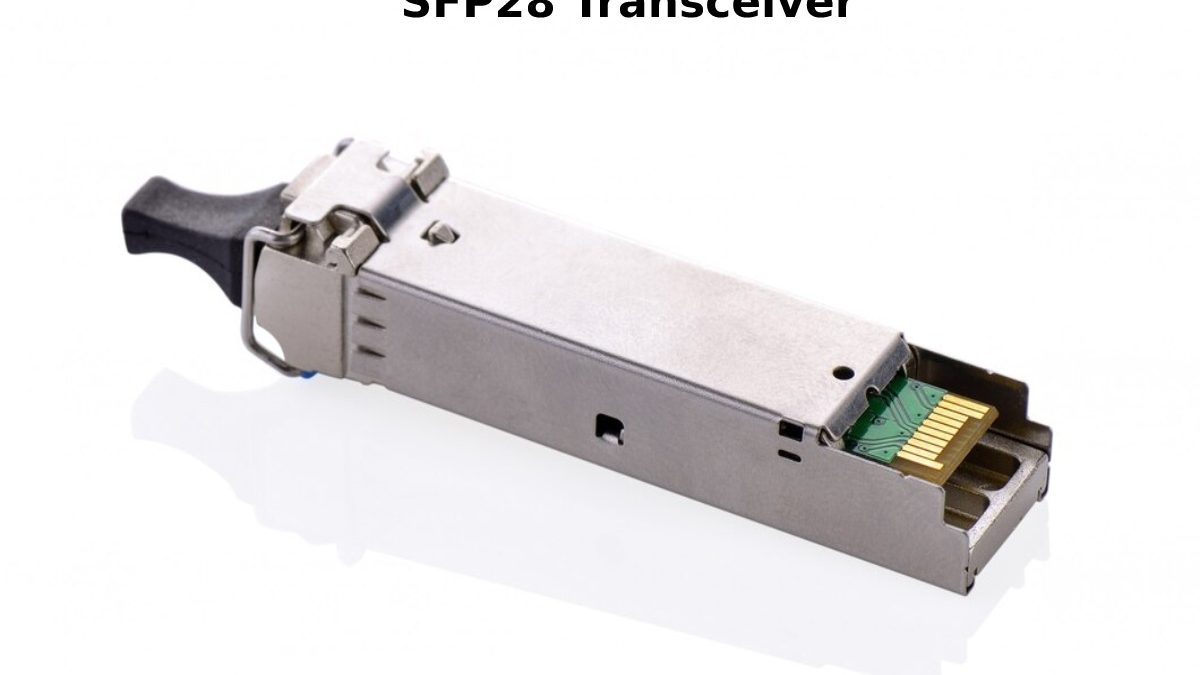SFP28 Transceiver: The Small Form-Factor Pluggable 28 is the third generation of SFP interconnect systems designed for 25G performance per spec (IEEE 802.3by). It has been enhanced to transmit signals at up to 800Mbps and can be installed in same spaced outlets as previous models with no increase installation time or cost because they are compatible across brands!
Because the best input/output (I/O) performance and fiber capacity of 25G SFP28 optical modules are 2.5 times that of 10G Ethernet, with higher port density and fewer switches and cables, it has a better matching 5G. Performance advantage; compared with 50G system, 25G SFP28 optical module can use 2 fiber channels to achieve 50G transmission rate, but has better cost per use; compared with 100G, 25G optical module has lower power consumption. Based on the above considerations, the SFP28 25G optical module is designed to meet the demand for CWDM optical modules in 5G fronthaul, and this product can effectively save costs and reduce power consumption.
Compared with the 10Gbit/s optical module system, the 25 Gbit/s SFP 28 optical module of this design needs to increase the transmitter CDR (clock data recovery) and the receiver CDR circuit in the overall structure. The interface of SFP28 refers to the SFF-8431 protocol, which is the golden finger interface of the optical module to the host, and is compatible with the SFP+ interface. The SFF-8431 protocol provides us with a complete hardware interface design solution. The hardware design diagram of the optical module is shown in Figure 5. The core optical components in the circuit are TOSA and ROSA, and the core electrical chip is the CDR chip. In the design of the 25G SFP28 optical module, in order to save costs, the Driver chip and the CDR chip use the same chip.
The MCU mainly realizes the configuration of the chip and the monitoring of the working status of the module through the I2C bus. The MCU adjusts the size of the bias current through software design, and realizes the adjustment of the output light size by querying the temperature compensation table. The MCU acts as the master and the slave respectively, and realizes the bus communication through the I2C serial port. The average optical power is controlled by using the MCU internal algorithm plus the loopback control circuit to adjust the digital quantity.
When the output light becomes stronger, the backlight current detected by the PD will become larger, and it is compared with the initial value of the input current set by the other set through the internal comparator to reduce the driving current, thereby reducing the average optical power; otherwise, If the light emission becomes weak and the backlight current becomes smaller, the drive current will be increased after passing through the comparator, and the average optical power will be increased. In this way, the average optical power output by the laser is kept stable.
Ecloudlight has the ability to produce a full range of SFP28 modules, including 25G CWDM and 25G DWDM modules. All modules are fully tested and tested, and data reports are available. It is the leading optical module supplier in the industry.If you have any questions about the 25G module, you can visit ecloudlight.

